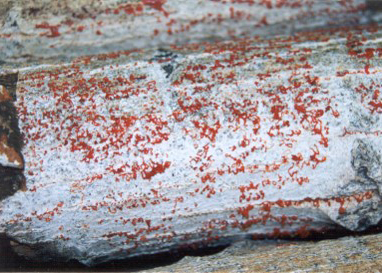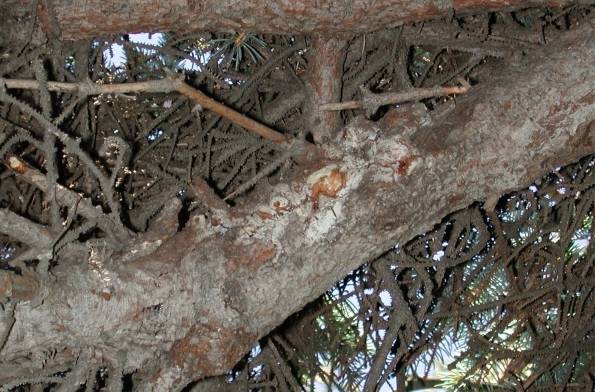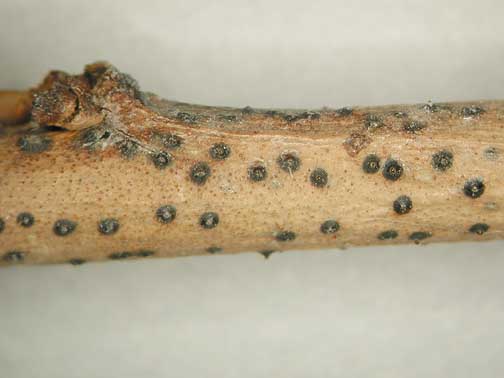Integrated Pest Management
Cytospora Canker
Leucostoma sp.
Hosts, Symptoms & Signs
- many deciduous trees; spruce
- branch dieback; cankers develop that are oval shaped
- fruiting structures develop on bark at canker or on dead branches
- weak pathogen; healthy, vigorous plants do not get infected
- ttacks stressed trees through wounds caused by pruning, insect feeding or winter injury or by other pathogens
Disease Cycle
- overwinters as fungus in the bark
- produces fruiting bodies that ooze spores in spring
- splashing water (irrigation or rain) spreads spores to neighboring branches or trees; if the spores land on a stressed tree in a wound, they germinate and start colonizing the tree, creating a canker over time
- severely infected trees will die within a few years; sometimes a tree is able to wall off an infection site and confine the pathogen; it will continue to live but it will have the canker present for the rest of its life
IPM Recommendations
- Avoid mechanical and winter injury.
- Prune dead branches in the winter and burn them (infected branches should be cut 4 inches below the end of the canker). Disinfect pruning tools between cuts using a 10% bleach or 70% alcohol solution or disinfecting wipes.
- Plant disease-free plants (avoid planting trees that already have dead branches).
- Control insects and other diseases.
- There are no effective fungicides available.




